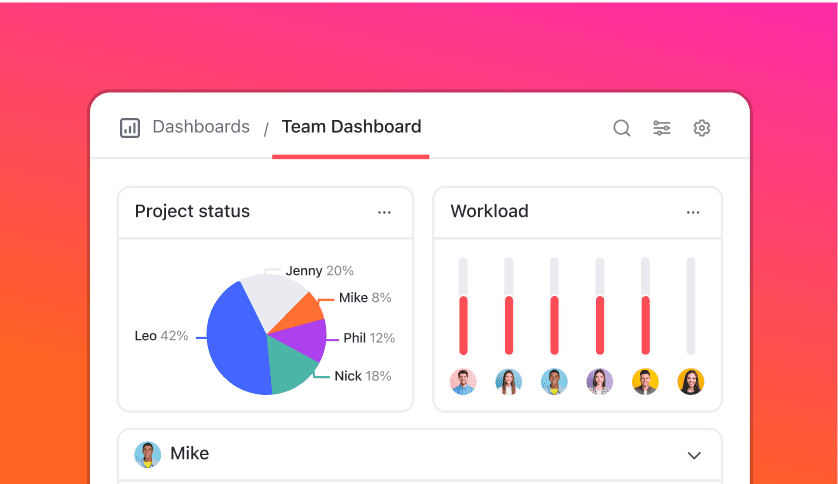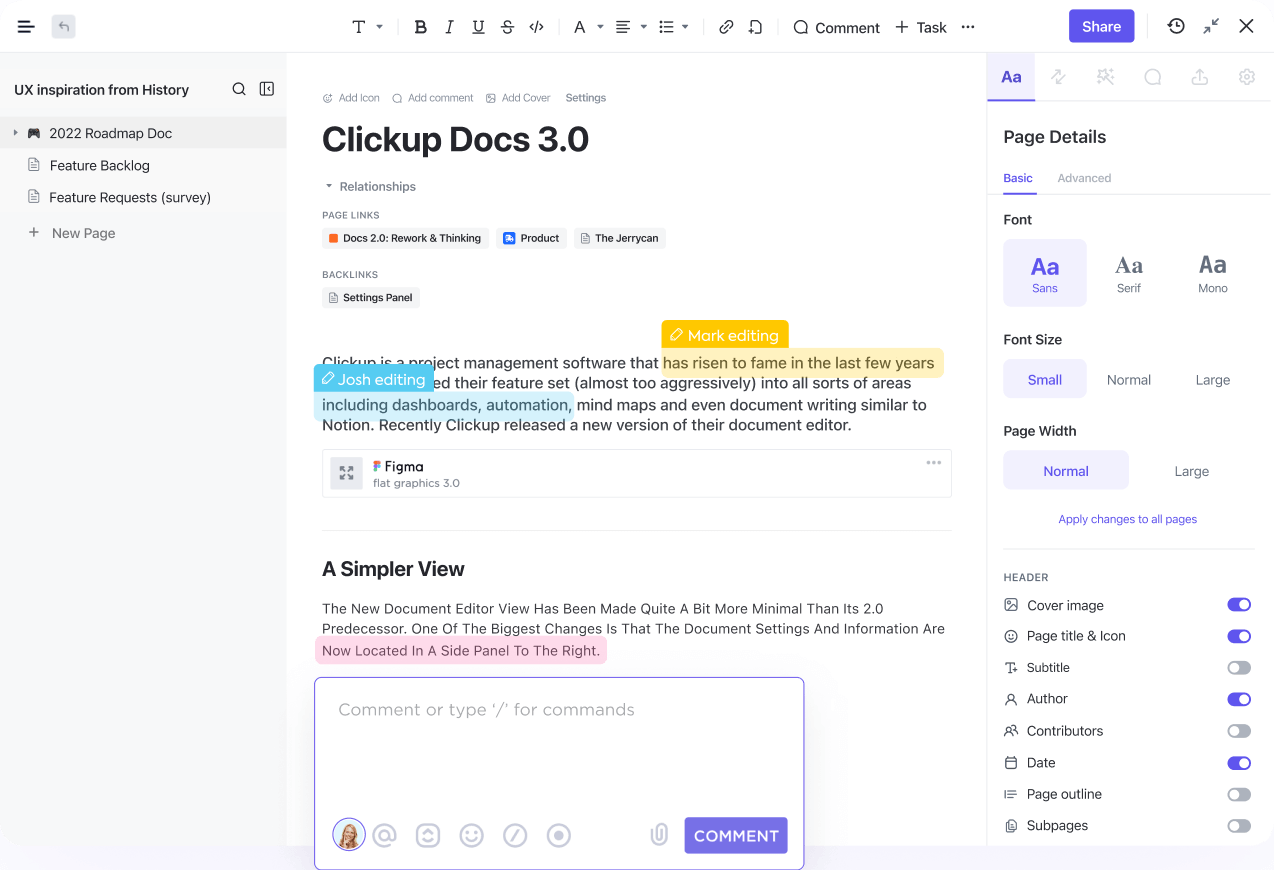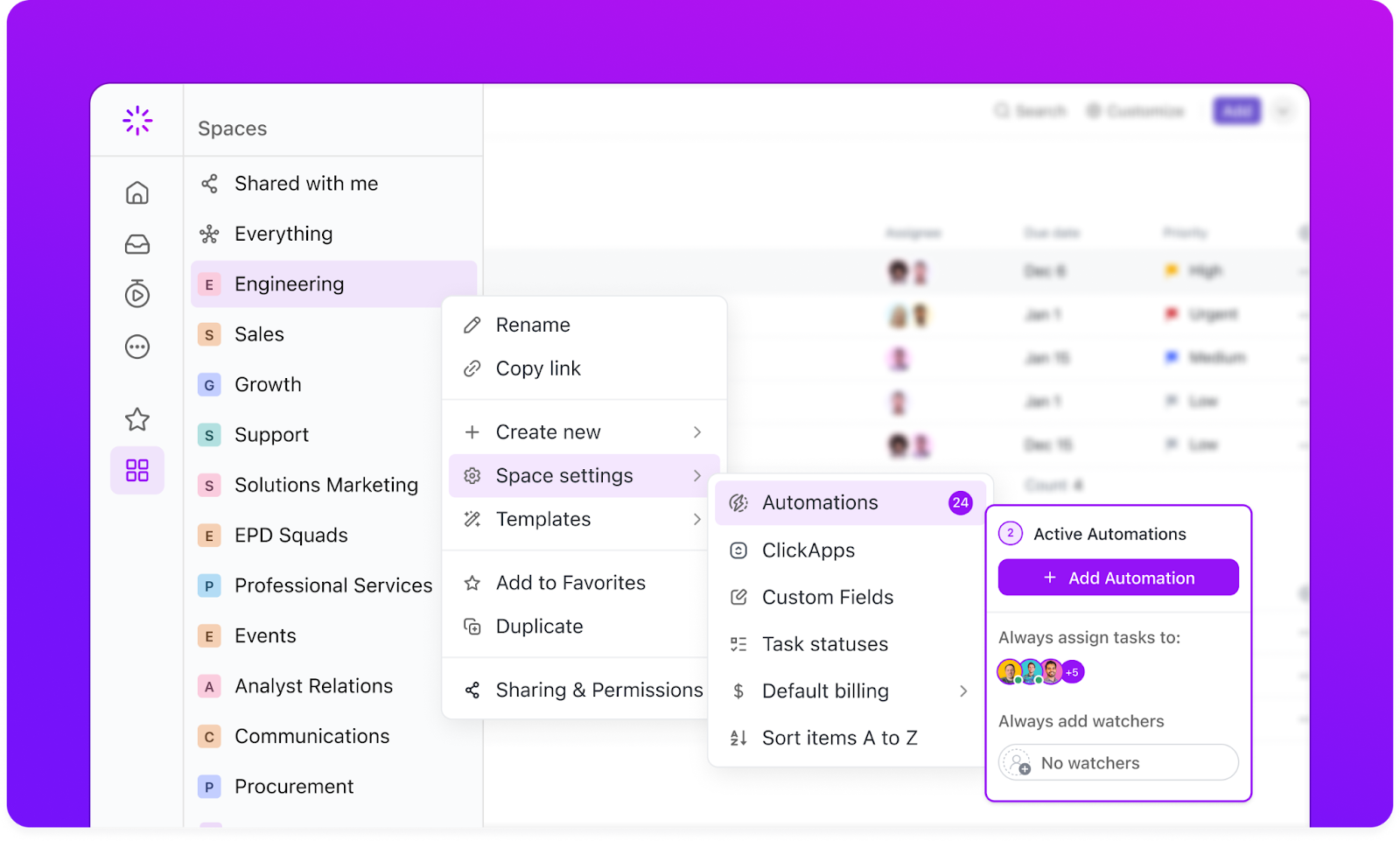Employee Incentive Programs Examples that Boost Retention and Engagement

Sorry, there were no results found for “”
Sorry, there were no results found for “”
Sorry, there were no results found for “”
You’ve been busting your chops at work, staying late, meeting deadlines, and pushing yourself to the limit. But when it’s all said and done, it feels like nothing changes. No extra recognition, no reward for the effort.
You start to wonder, ‘What’s the point of giving it my all if no one notices?’
This is where employee incentive programs can make all the difference. Unlike your usual paycheck, incentive programs show employees their hard work is valued.
In this blog, we’ll explain why they are essential and some effective employee incentive program examples to help you get started. 🎬
Employee incentive programs boost engagement, motivation, and retention when aligned with company goals.
Employee incentives are rewards or benefits designed to motivate and recognize employees for their contributions. These incentives go beyond a regular paycheck to enhance engagement, productivity, job satisfaction, and morale.
Examples include performance bonuses, extra vacation days, gift cards, or public recognition for achievements. These employee rewards programs can be financial and non-financial, offering employees tangible and intangible ways to feel valued for their efforts.
When properly implemented, employee incentives help create a positive workplace culture and encourage employees to perform at their best consistently.
🧠 Fun Fact: The first recorded use of incentives dates back to ancient Greece, where athletes were rewarded with olive wreaths for their victories in the Olympic Games.
Incentives aren’t just nice to have—they directly impact workplace motivation and efficiency. 🏢
🔍 Did You Know? According to a Pew Research Center study, nearly 49% of working adults are pleased with the benefits their employer offers. It’s a reminder of how much a solid benefits package can boost employee satisfaction and loyalty.
Running out of ideas for creative incentive programs that your teams love? Ask ClickUp Brain for ideas!

Employee incentive programs come in various forms, tailored to meet the needs of your team and organizational goals. Below are some common types. 📑
Financial incentives are one of the most straightforward and motivating ways to reward employees. These rewards directly impact an employee’s paycheck or offer a one-time financial benefit.
📌 Examples:
💡 Pro Tip: Ensure the financial incentives are tied to clear, measurable goals. Ambiguous targets can reduce motivation and make the program seem unfair.
Sometimes, a simple ‘thank you’ can go a long way. The incentives emphasize acknowledging hard work and success, creating a positive culture that boosts morale.
📌 Examples:
🧠 Fun Fact: The ‘Employee of the Month’ program is based on psychologist B.F. Skinner’s behaviorism theory emphasizes using positive reinforcement to encourage desired behaviors and boost motivation.
Not all rewards have to be financial—some of the most impactful incentives focus on work-life balance.
📌 Examples:
💡 Pro Tip: Non-monetary incentives often work best when they cater to the personal preferences and needs of the employee. Survey your team to find out what they value the most.
Collaboration is key! These programs reward team performance and foster unity.
📌 Examples:
💡 Pro Tip: Ensure that team-based incentives are inclusive and reflect the efforts of all team members, not just the ones with the highest visibility.
Employee growth and development are vital to job satisfaction. Incentives that focus on learning and upskilling drive employee performance and career growth.
📌 Examples:
🔍 Did You Know? 94% of employees said they’d stick around longer at a company if they had more chances to learn and grow. It’s a sign that professional development can play a huge role in keeping talent engaged and loyal.
Healthy employees are happier and more productive. These incentives promote mental and physical well-being.
📌 Examples:
Employee perks and benefits are non-wage compensations provided to employees in addition to their regular salary. These incentives can increase employee loyalty and help retain top talent.
📌 Examples:
💡 Pro Tip: Regularly review and update employee incentive plans to ensure they remain competitive and meet the evolving needs of your employees.
Social impact incentives involve rewarding employees for making a difference, whether in the workplace or within the community. These incentives align employees with the company’s social responsibility goals.
📌 Examples:
💡 Pro Tip: Ensure social impact incentives align with your company’s core values, as this will enhance the program’s authenticity and encourage more participation.
Employees want to grow within their roles, and career advancement incentives boost team motivation by providing a clear path for promotion and growth.
📌 Examples:
Tech-related incentives are great for tech-savvy employees who value the latest gadgets or tools to enhance their productivity or personal lives.
📌 Examples:
🔍 Did You Know? A 2020 study revealed that employees who receive unexpected rewards—like a spontaneous lunch or a small gift—are more motivated than those who receive scheduled bonuses.
Sometimes, stepping away from traditional methods can lead to greater employee satisfaction. Creative and personalized incentives keep employees engaged while providing rewards they genuinely value.
Let’s dive into a few approaches that stand out. 🌟
Unexpected and thoughtful gifts show employees you value their contributions. These rewards create memorable moments and boost morale.
Time is often the most cherished reward. Offering additional time off or flexible work options clearly shows you value employees’ well-being.
Here are some employee incentive ideas:
🔍 Did You Know? A recent Gallup survey found that employees most often receive meaningful recognition from their managers (28%), followed by CEOs (24%), managers’ managers (12%), customers (10%), and peers (9%).
Giving employees control over their work ignites their passion and keeps them motivated. Autonomy shows trust while aligning their interests with company goals.
Here are some areas where you can implement this:
Long-term benefits show employees you’re invested in their future, not just their present. These programs provide a sense of security and stability.
Look at these options:
Designing incentive programs that truly make an impact requires a thoughtful approach and ClickUp, the everything app for work, can help at every step.
From aligning rewards with organizational goals to leveraging data for continuous improvement, ClickUp’s HR Software ensures your process is organized, efficient, and collaborative.
Here’s how you can use it to craft programs that drive motivation and measurable success. 📊
Your incentive program should reinforce company objectives. Start by defining clear goals.
For example, a customer service team might focus on improving satisfaction scores, while a sales team could aim to hit specific revenue targets. These goals should be specific, measurable, and tied to the company’s mission.

ClickUp Goals helps align employee efforts with organizational targets. For instance, if the goal is to increase sales by 20%, you can set individual sales targets for each team member in ClickUp. This ensures everyone’s work is contributing directly to the company’s success.
You can also set individual targets for each salesperson and track their progress in ClickUp.
As they hit smaller milestones, ClickUp automatically updates goal progress, giving you real-time visibility into how everyone’s performing.
💡 Pro Tip: Make your incentive programs more engaging by incorporating gamification elements. Set up leaderboards or achievements for employees to reach, adding a fun and competitive element that keeps motivation high.
Effective incentive programs become more impactful when integrated into your business performance systems. This approach helps you identify the areas where rewards drive the most impact.
For example, performance reviews or feedback sessions can highlight key contributors who exceed expectations, while participation metrics reveal trends in engagement levels.
The ClickUp Performance Report Template can be a helpful tool for tracking these insights. It enables you to generate detailed reports on individual and team performance, clearly showing how employees contribute to goals and organizational success.

With ClickUp Dashboards, you can visualize these insights effortlessly. It offers a real-time view of employee participation and outcomes, helping you identify which strategies resonate most with your team.
For example, track the number of employees who have completed wellness challenges or exceeded their quarterly goals. This visual data makes it easier to refine programs and reward high performers.
⚙️ Bonus: Explore additional performance review templates to customize feedback processes and ensure consistency across your team.
💡 Pro Tip: Don’t limit rewards to just outcomes. Acknowledge the behaviors that lead to success, such as teamwork, creativity, or problem-solving. Recognizing the effort to achieve goals encourages employees to continue those behaviors.
Defining KPIs is essential for measuring the success of your incentive program. These indicators provide a concrete way to evaluate how well the program meets its goals. For example, retention rates can measure long-term effectiveness, while task completion rates track short-term engagement.
Storing these program guidelines in ClickUp Docs ensures everyone stays aligned.

HR teams can create a centralized hub for tracking program details, like incentive criteria or reward structures. This makes it easy for employees and managers to access and understand the expectations.
For instance, a guide detailing the reward process for meeting quarterly KPIs can eliminate confusion and foster transparency.
💡 Pro Tip: Engage team leaders and managers in identifying and recognizing employee achievements. Their direct interaction with employees ensures that rewards feel more personal and meaningful, increasing their impact.
Gathering employee feedback helps identify gaps and adapt strategies to meet real needs. For example, employees might suggest more flexible rewards, such as additional time off or opportunities for professional development.
ClickUp Forms streamlines this feedback process, making it easy to collect insights efficiently.
After launching a program, use Forms to survey employees about their experiences and preferences.
Let’s say you create a survey to assess satisfaction with the current rewards or gather suggestions for new ones. Analyzing this feedback enables you to refine the program and implement changes that make a difference.
⚙️ Bonus: Try the ClickUp Employee Feedback Template to get a headstart on gathering valuable insights from your team.
For ongoing recognition, ClickUp Automations can streamline notifications or assign tasks when KPIs are met. Automating these processes saves time while ensuring employees feel valued promptly.

Managing projects or tasks, tracking org-wide goals, and communicating with other departments or teams definitely improved in time savings and cost benefits due to transparency on the projects. We can provide support to the bottlenecks or perform tasks in advance because there is visibility of what’s next.
It’s important to focus on strategies beyond the basics to make your employee incentive program effective. Here are some unique approaches to ensure success. ✅
Design the program with an integrated mechanism for collecting ongoing feedback. For instance, use employee surveys or group discussions to gauge what’s working and identify areas for improvement.
Adapting based on this input ensures your program remains relevant and engaging.
Team-based incentives foster collaboration, while individual rewards recognize personal achievements. Striking the right balance keeps both dynamics strong. For example, celebrate a department’s success with a team lunch while rewarding standout performers with personalized perks.
💡 Pro Tip: Rotate the type of rewards offered to keep the program fresh and exciting for everyone involved.
Transparency builds trust in the program. Share stories of how past rewards have impacted employees. For instance, highlight how a previous achiever used their development stipend to earn a certification or attend a top-tier conference.
Top-down rewards matter, but peer recognition can make incentives more inclusive. Create a system where colleagues can nominate each other for their contributions. For example, monthly awards based on peer votes foster camaraderie and mutual appreciation.
Test the incentive program on a small group before rolling it out company-wide. Suppose a department trials it for a quarter, providing feedback on what works. Use these insights to refine the program and address potential challenges.
Even well-intentioned incentive programs can fail if not carefully planned. Here are some common pitfalls to watch out for and how to address them effectively. ⚠️
Incentive programs with too many rules, unclear objectives, or complex eligibility criteria confuse employees and reduce participation. An overly complicated system often feels more like a chore than a reward.
✅ Solution: Keep the program simple and transparent. Clearly define goals, eligibility, and rewards, and communicate these details. A centralized platform like an employee portal can help streamline communication here.
Short-term incentives like one-time monetary bonuses or employee appreciation gifts may create a temporary boost but fail to sustain employee engagement over time. Employees often lose interest once the reward is achieved.
✅ Solution: Combine short-term and long-term rewards to maintain engagement. Offer immediate incentives, like gift cards or public recognition, alongside programs that support career growth or long-term benefits, such as leadership training or wellness perks.
Incentive programs prioritizing speed or output without considering quality or ethical standards can encourage harmful behaviors, such as cutting corners or creating toxic competition among employees.
✅ Solution: Clearly define the behaviors and outcomes you want to encourage. For example, reward collaboration, innovative problem-solving, or consistently meeting quality standards. Pair recognition with specific examples to reinforce desired actions.
Many incentive programs prioritize senior staff or high performers, unintentionally alienating newer or less experienced employees. This can lead to feelings of exclusion and demotivation.
✅ Solution: Create inclusive incentives that consider employees at all levels. For example, introduce onboarding rewards for new hires who complete training milestones or meet early performance goals. Inclusive rewards ensure everyone feels valued.
📖 Also Read: Top Project Milestone Templates
Employee incentive programs are essential for creating an environment where employees feel valued, engaged, and motivated to perform at their best. When thoughtfully implemented, these programs can strengthen workplace culture, improve retention, and align individual contributions with organizational success.
The key to making incentive programs effective lies in seamless management and execution. That’s where ClickUp comes in. From setting clear goals and tracking progress to automating recognition workflows, ClickUp provides everything you need to stay organized and ensure your programs have the desired impact.
No matter the size of your organization or the complexity of your goals, ClickUp simplifies the process so you can focus on building a motivated, high-performing workforce.
Take the first step toward transforming your workplace. Sign up to ClickUp for free today!
© 2025 ClickUp